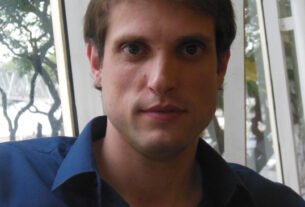What is the difference between a hospital rated 6 and one rated 7, the top score possible?
The difference between this new rating and level 6 lies fundamentally in the fact that all information is supported by the system, providing value to clinical processes with help, alerts, etc. Professionals from different services collaborating on a patient’s care never use paper. Information flows in a transverse manner, going beyond the service itself so that it can be consulted and revised from anywhere on the Care Network.
What kind of information can the Cerner Electronic Health Record process?
Everything; no healthcare information is recorded on paper. For example, vital signs taken by the Nursing department can be loaded into it, medical imaging is 100% digital and it can be accessed online throughout the Healthcare Network, doctors can enter prescriptions electronically, backed up by an intelligent support process for clinical decision-making.
How is this information analyzed?
Cerner Millennium® is a sophisticated intelligent clinical and corporate support program which allows staff to analyze the quality and efficacy of care. The hospital could thus be described as a data-oriented organization, which is one of the main characteristics of a phase 7 hospital.
What other data can it manage?
It is possible to incorporate data provided by electrocardiograms and cathetergrams. Furthermore, documentation that arrives on paper from outside companies is scanned and incorporated to the EHR.
How does the information circulate?
The information follows the patient. For example, it might be first entered by the Emergency department and then sent on to the Hospitalization Unit. Finally the Primary Care doctor will receive an alert via the Messaging Center when the patient is discharged from the hospital. Continuity is thus provided throughout the care and instructions provided by different departments of the Hospital and associated Healthcare Centers.
How is the information re-used?
The system makes it possible to re-use information to provide transversality and continuity to the processes. From the care point of view, the information is easily shared via standard protocols with other authorized entities. Denia Hospital has a unified summary of the development of the patient in the center, integrating data from the different medical services through which they have passed, be they Hospitalization, External Consults, Emergencies, etc. These clinical data storage facilities are also used to analyze patterns aimed at improving care and the patient’s safety.
What advances have you experienced since its implementation?
Denia Hospital has already developed several Clinical Paths or ‘Power Plans’ for the pathologies most commonly found in the population, such as hypertension. The system is continuously fed with data that professionals introduce every day.
We have also implemented a Sepsis Rule for nurses in the Emergency department whereby, during triage, they record a series of basic parameters, such as vital signs, for each patient. Later, the system, via a series of pre-programmed rules, can combine vital signs and analysis of the patient to determine the risk of sepsis. If it is confirmed, it sends out an alert throughout the whole patient treatment and care process.
We also make use of Medication Alerts; when a doctor prescribes a medication, the system cross-references them to see if the principal active agent might interact with patient allergies or incompatibility due to age, weight or another medication they are currently being administered.
What impact has it had on the hospital’s administration?
From the administration point of view, Cerner Millennium makes it possible to work according to ‘Business Intelligence’ principles. As all the information is documented it can also be exported; this means that data can be stored in a central database which can provide an overview of development over time and associated costs.
The model for the adoption of the electronic health record (EMRAM) classifies levels of expertise at hospitals according to the electronic health records, from limited auxiliary department systems to a fully electronic environment.
Hospitals can be evaluated with EMRAM qualifications by participating in a voluntary study carried out by HIMSS Analytics Europe, which compiles detailed healthcare IT data and tracks the implementation and adoption of EHR applications during each phase. The final phase 7 evaluation is carried out via a visit to the hospital in question.
According to experts, given the current situation typified by scarce financial resources and staff, becoming a level 7 hospital is an important indicator of the high quality of patient care with an interoperable electronic record.
Has your efficiency improved?
Markedly. It is important to make clear that Denia Hospital is a public center, run under the auspices of the Generalitat Valenciana, but managed by a private company: Marina Salud. 65% of the capital of Marina Salud is owned by DKV Seguros Medicos and the remaining 35% by Ribera Salud, known in Spain and the firm promoting the Alzira model. After 13 years, the results show that the Alzira model has become a leader in efficient and effective healthcare management, without giving up the basic principles which must guide and maintain our National Healthcare System, the SNS: universal, free public healthcare. Given the situation of economic uncertainty that surrounds us, the model is presented as an alternative for achieving the sustainability of our public healthcare system.
Do you believe that the public and private sectors should work more closely together?
Certainly. The key lies in assuming that privately managed public centers should function according to the same criteria as other public hospitals, because the finance, control and property are public and only the service provision is private. This requires the existence of a private initiative which is clear about the directives it is given by Public Administration, for which reason the model requires loyal collaboration, a long term vision, a will to stay the course, firm commitment on the part of professionals and a healthcare policy focused on quality with a clear commitment to serving citizens.

